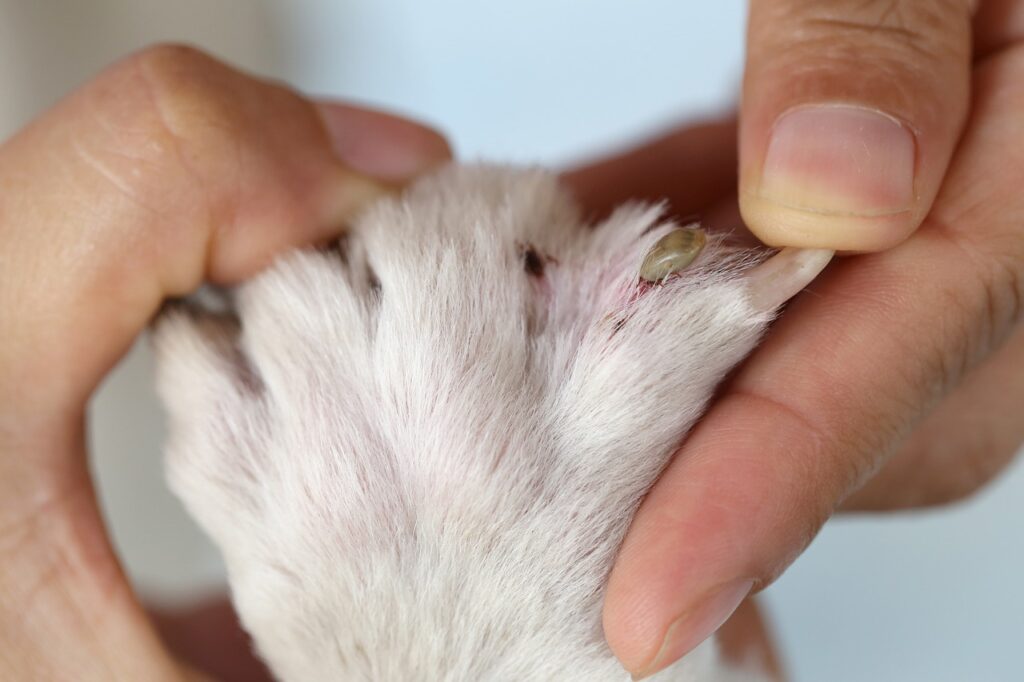As the weather warms up, many of us will be heading outside to enjoy the great outdoors with our friends, family, and pets. Tall grasses and areas of shrubs and bushes may seem harmless, but they provide the perfect hiding spot for ticks, a troublesome blood-feeding parasite that can carry and transmit many different diseases including Lyme disease and Rocky Mountain Spotted Fever.
Here in Ohio, the 3 most prevalent species of ticks are: the American Dog Tick, the Lone-Star Tick, and the Black-Legged Tick. You likely take precautions for yourself when spending a day outside in the woods or park by applying sunscreen or bug spray, but what about taking precautions for your pet?

Tick Prevention for Your Pets
Ensuring your dog or cat is on a preventative that includes protection against ticks is the best way to protect your pet from tick-borne illnesses. Nowadays, there are many combination preventatives that prevent not just ticks, but fleas as well. Since dogs go outside more than cats, your dog is likely exposed to where ticks call home more often than you think. The question becomes….so how would you know if your dog has a tick-borne illness? Often times, the initial symptoms of tick-borne illnesses are vague and may present as symptoms such as fever, lethargy, and loss of appetite. However, tick-borne illnesses can be screened for very easily now by running an annual tests, commonly combined with heartworm tests.
This simple in-house test checks for the presence of heartworms and the 3 most common tick-borne diseases: Lyme disease, Anaplasmosis, and Ehrlichiosis. In addition to screening your dog annually, it is also important to be diligent in checking your dog for ticks after outdoor activities such as going on walks, hikes, to the dog park, etc. Once a tick bites, they secrete a glue-like substance that allows them to adhere to and feed on your dog’s blood.
How to Remove a Tick

Ticks can often be removed at home, but it’s important to ensure you remove the tick properly by using tweezers to grab it by the base of its head, pulling straight up, and washing your hands well afterwards. Of course, your veterinarian can also help with tick removal if you are hesitant to remove them at home.
Cats and Ticks
Cats can also have ticks feed on them as well. Cats can be affected differently by the intracellular bacteria different tick species may transmit to them. Most notable diseases cats can get would be Hemobartonellosis, Cytauxzoonosis, or Tularemia. Cats who remain primarily indoors can have ticks attach to them by humans or other pets bringing ticks in from outside on them. Households with cats that frequent the outdoors can naturally have ticks attach to them the same ways a dog could be exposed. There are preventatives for cats that include warding off fleas and ticks that will help decrease a cat’s exposure to these pesky parasites.
Give us a call today to talk with our doctor and staff about tick prevention and screening tests to ensure your dog and cats stay happy, healthy, and most importantly, tick free!

